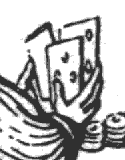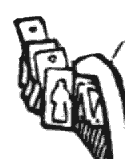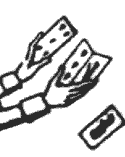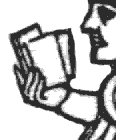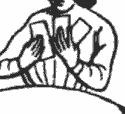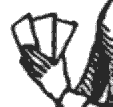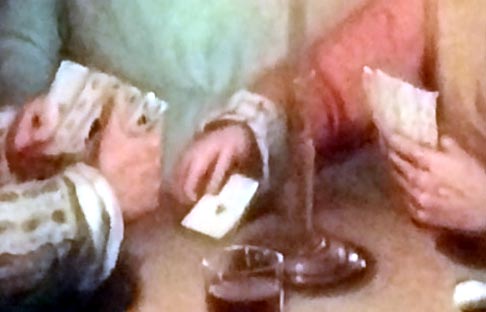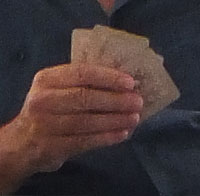Fanning the Playing Cards
The manner of holding the cards in the hand is related to a player’s needs to view his/her hand in a logically organised way, perhaps categorised into sets or sequences, usually reading from left to right...
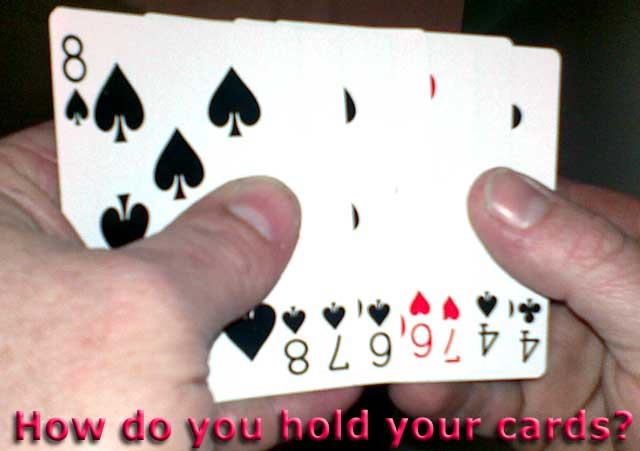
THE MANNER OF HOLDING CARDS in the hand is related to a card player’s needs to view his/her hand in a logically organised way, perhaps categorised into sets or sequences, usually reading from left to right.
In their early days, cards were introduced into a society with different levels and divisions of literacy than those which we take for granted today. Furthermore, early suit systems were not the abstract and logically categorised symbols we use today - two red and two black - but were everyday objects such as acorns, birds, flowers, wild animals, etc. relating to everyday experience. As soon as they were being mass produced by printing they appealed to a largely pre-literate, illiterate or lay population, unversed in the refinements of formal logic, grammar or acquired literacy.
A glance through playing card books showing early prints of card players does not always suggest that neatly fanning the cards was the norm. For example, in the print of “The Duke and Duchess of Bavaria playing at cards” of c.1500 (see figs 4 & 6) the two aristocrats are shown holding their cards one just above the other, in a single pile. (A player in the top photo is doing the same.) They are also seen to be keeping a tally of the score with scratches or marks on the table, and a five of hearts is in play! (click on thumbnails to see whole picture).
However, early paper was often very thin, and players had to hold their cards carefully to prevent their opponents being able to see through the cards.
The Spanish practice of ‘pintas’, which would appear to facilitate identifying cards by their tops, as opposed to holding them fanned out is a relatively recent innovation. Nor did the early playing cards have index numbers, which is another logical refinement to satisfy a more ‘literate’ card player.
This all seems to imply that the manner of holding playing cards will reflect various cultural circumstances, such as levels of literacy, numeracy, modes of logical thought or categorisation, manual dexterity, secretiveness, skill at card-sharping, etc. Playing cards are a sort of language, with their own syntax, grammar and meanings, requiring mastery of the logic, the deductive procedures and use of the memory. Watch how different people hold their cards during play!
An example of oral expressions once made during play may still survive on Italian and Spanish playing cards, expressions which do not come from literary sources, but from the bar or café where card games were played.
Note: Click on any thumbnail image to see the entire picture.
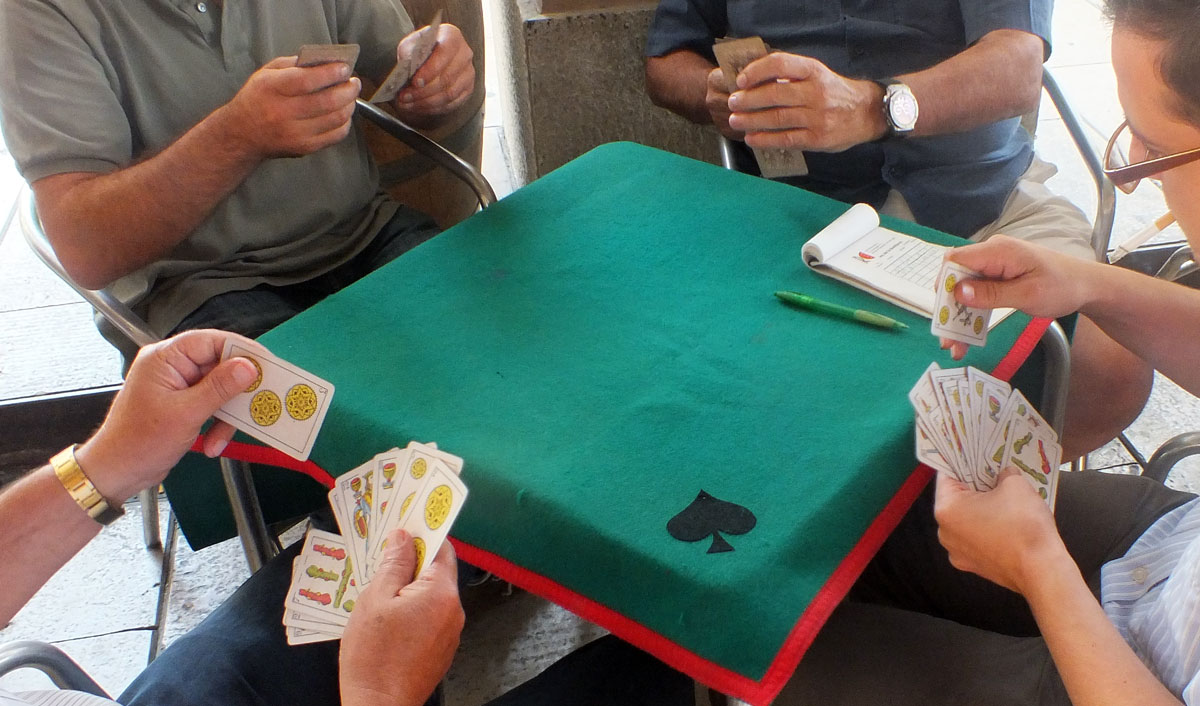

By Simon Wintle
Member since February 01, 1996
Founder and editor of the World of Playing Cards since 1996. He is a former committee member of the IPCS and was graphics editor of The Playing-Card journal for many years. He has lived at various times in Chile, England and Wales and is currently living in Extremadura, Spain. Simon's first limited edition pack of playing cards was a replica of a seventeenth century traditional English pack, which he produced from woodblocks and stencils.
Trending Articles
Popular articles from the past 28 days
Related Articles
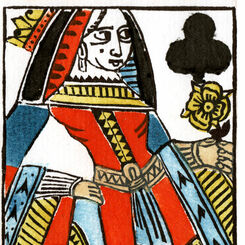
Woodblock and Stencil Queen of Clubs
A limited edition art print of the Queen of Clubs 1984 woodblock joker.
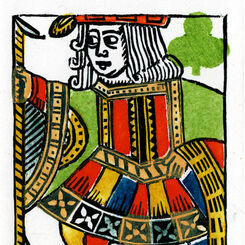
Woodblock and Stencil Jack of Clubs
A limited edition art print of the Jack of Clubs 1984 woodblock joker.
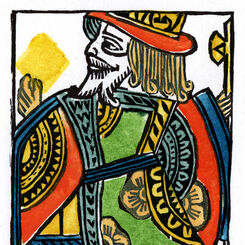
Woodblock and Stencil King of Diamonds
A limited edition art print of the King of Diamonds 1984 woodblock joker.
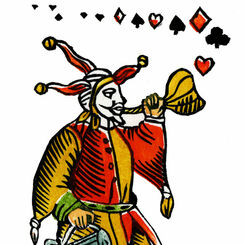
Woodblock and Stencil Joker
A limited edition art print of the 1984 woodblock joker.
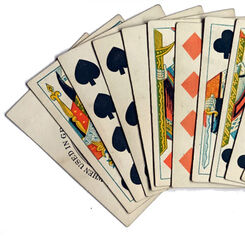
Managing cards without corner indices
For many hundreds of years cards had no corner indices, were square cut and mostly made from card wi...
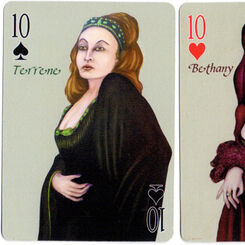
Psychology, Numerology and playing cards
Numerology assigns significance to individual digits and their combinations, considering them as sym...
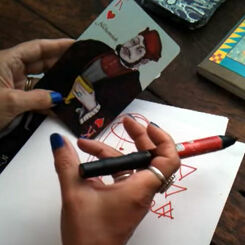
Geomancy and playing cards - a match meant to be
Playing cards are made of dualities...
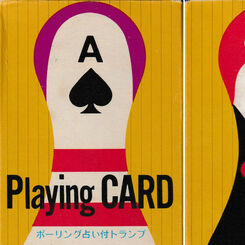
Fan DACK Playing CARD
Unusual cards in the shape of skittles, intended for fanning.
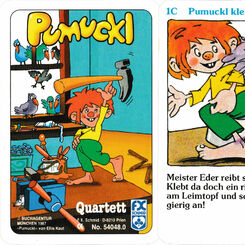
Pumuckl quartet game
Quartet game featuring the kobold Pumuckl, creation of the German author Ellis Kaut.
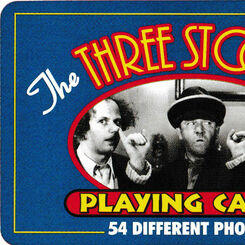
Three Stooges playing cards
54 different photos of the famous American vaudeville and comedy team.
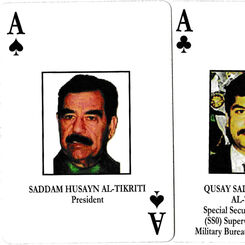
Iraqi Most Wanted Playing Cards
Playing cards used to help troops identify the most-wanted members of Saddam Hussein's government. 2...
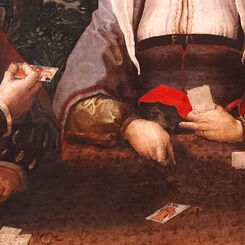
Playing Cards and Calendars
In this video Ana Cortez examines the relationship between ordinary playing cards and the calendar. ...
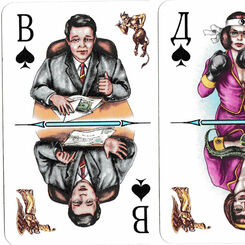
Madam Luck
“Madam Luck” playing cards designed by B. Adziev, 1998.
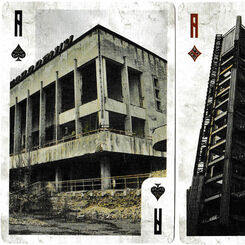
Chernobyl Memorial Playing Cards
Chernobyl Memorial Playing Cards designed by Misery Development Ltd. / Nicolai Aaroe and printed in ...
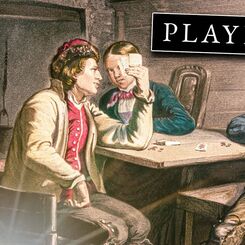
Playing Cards: A Secret History
Playing Cards: A Secret History
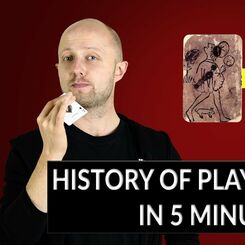
History of Playing Cards explained in 5 Minutes
Video by Art of Impossible. In this video you will get a short overview of the most important histor...
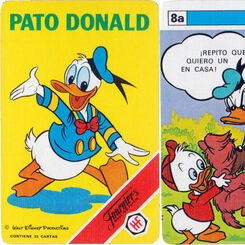
Pato Donald
Donald Duck card game © Walt Disney Productions, by Naipes Fournier, 1984.
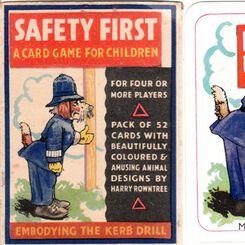
Safety First
Safety First card game embodying the Kerb Drill, published by John Jaques & Son Ltd, 1940s.
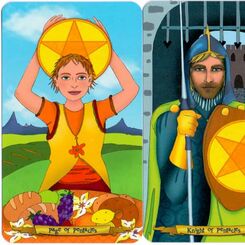
Nine Lives Tarot
Nine Lives Tarot by Annette Abolins represents the artist’s creative and spiritual perspective on li...
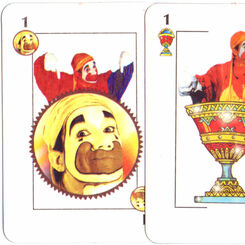
Piñón Fijo
“Piñón Fijo” is an Argentine clown, whose real name is Fabián Gómez. He is well-known on Argentine c...

Interview with Tom and Judy Dawson from 52 Plus Joker
Interview with Tom and Judy Dawson from 52 Plus Joker. Chatting about the history of playing cards, ...

The Simpsons™
The official ‘Simpsons’ playing cards produced by Winning Moves Games, 2003.
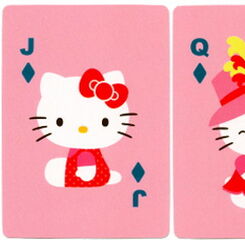
Hello Kitty
“Hello Kitty” playing cards published by Sanrio, manufactured in China, 2013.
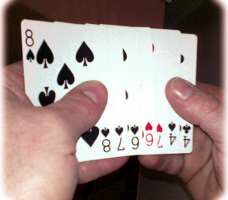
Fanning the Playing Cards
The manner of holding the cards in the hand is related to a player’s needs to view his/her hand in a...
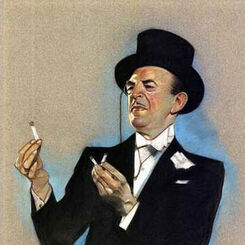
The Cardini Playing Cards
Richard Valentine Pitchford, better known as Cardini, is one of that select band of performers who b...
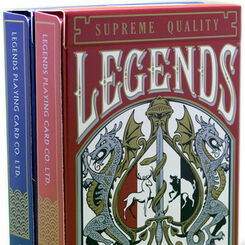
Legends Playing Cards
Legends Playing Card Company (founded 2013) aspires to print the highest quality playing cards and p...
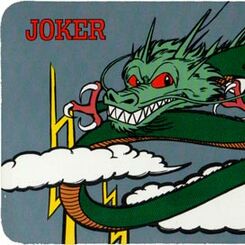
Dragon Fanning Deck
This set of cards published by DP Group Ltd (Japan) allows the performer to create different fans

Girls’ Generation
“Girls’ Generation” (Korean: 소녀시대; Sonyeo Shidae) is a nine-member South Korean pop girl group forme...
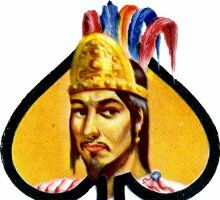
Baraja Cuauhtémoc
Baraja Cuauhtémoc published by Treviño Narro, Monterrey, Mexico Original artwork by P. X. Santaella ...
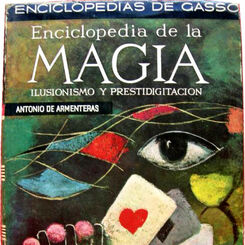
Conjuring and Magic
The art of mystifying people is very old indeed. The first conjurers were priests who obtained power...
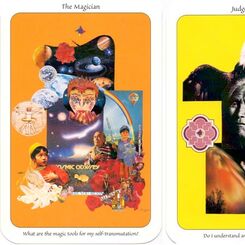
Self-Guided Tarot by Cameo Victor
Human beings have always yearned to understand the experience of life. The knowledge that we seek is...

The Five Minute Handwriting Analysis Kit
Handwriting Insights - the 5 minute handwriting analysis kit - allows you to better understand peopl...



